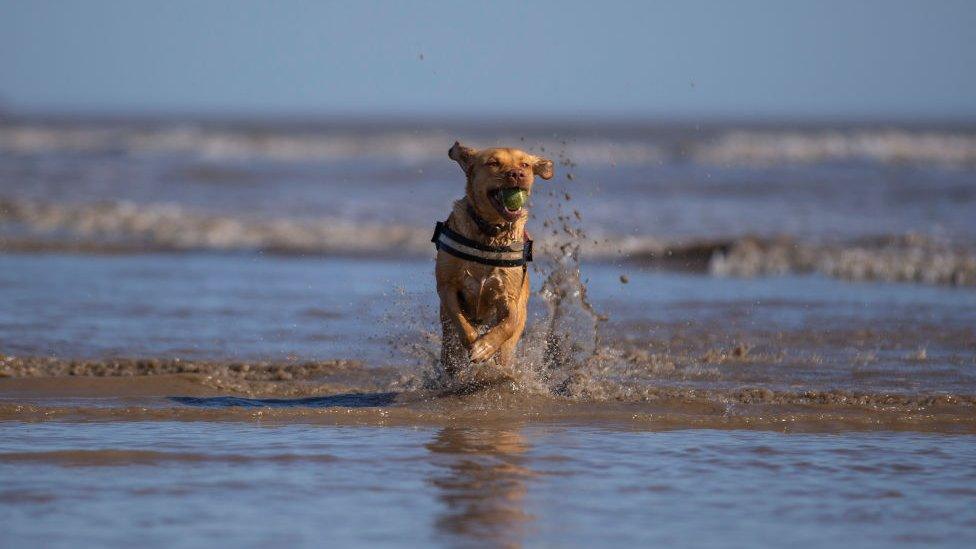Dogs at double risk of heatstroke in London, report finds
- Published

A new report finds flats and terraced housing is associated with an increased risk of dogs overheating
Dogs living in London are the most at risk from heatstroke in the UK, according to a new study.
The Royal Veterinary College and Nottingham Trent University found dogs in the capital had double the chance of falling ill than some other regions.
Heatstroke, also called heat-related illness, is potentially fatal.
"Awareness of these extra risks can help owners take steps to protect their dogs," the report said.
Dr Dan O'Neill, a co-author of the paper, said the findings "emphasise the double-whammy risk of heatstroke that dogs face in built-up areas".
The study suggested flats and terraced housing were associated with an increased risk of overheating. A greater percentage of cases in London were triggered by confinement in a hot building, according to the report.
It found dogs that were confined to a hot building accounted for 8% of cases in London, which was more than double that of the wider UK figure of 3%.
Researchers said this could be due to a higher proportion of flats than in rural locations, and because the ambient temperature in cities such as London can be about 5C warmer than in the countryside.

Dog owners are advised to cool dogs showing warning signs of heat stroke
The average temperature in which dogs became ill from heatstroke was 16.9C (62.4F) researchers found, lower than previously thought.
The researchers investigated risk factors for heatstroke by analysing 2016 vet records of more than 900,000 UK dogs from the VetCompass programme at the Royal Veterinary College.
Early signs
They found that during the single year of the study, 390 dogs needed vet care for heatstroke, including 72 in London.
Early signs of heatstroke include excessive panting, red or darkened gums and tongue, confusion and unsteadiness leading to collapse, diarrhoea, vomiting and even seizure leading to coma.
The report found older and heavier dogs were most at risk of developing severe heatstroke. Flat-faced breeds such as pugs and bulldogs were also found to be high-risk at dying from heatstroke.
Emily Hall, the report's lead author, said: "As global temperatures continue to rise, a better understanding of the combined risk factors for heatstroke will support more targeted owner education to improve canine welfare.
"Whilst it does not explain all the additional heatstroke events in London, a significantly greater percentage of cases in London were triggered by confinement in a hot building compared to the rest of the UK."
Related topics
- Published18 June 2020

- Published3 July 2018
